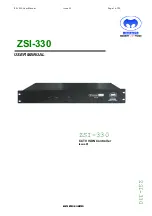
1 Installation site
■
Position the unit in such a way that no one is endangered
by flue gas and radiant heat and no fires can break out.
■
The supply air jet must be free to spread out unhindered
(consider beams and lights).
■
The unit must be accessible for maintenance and servicing
work. The connecting lines must be able to be dismantled.
2 Flue gas evacuation
■
In all cases, use only the original flue gas accessories
approved for use with the units for the installation. Do not
combine systems from different manufacturers.
■
Observe national / local regulations when planning the
flue gas evacuation and the combustion air supply.
■
Provide suitable openings for the roof and wall bushings
of the flue gas ducts (for the dimensions of the flue gas
accessories, see part F 'Options').
■
Use flue pipes with the same diameter as the combustion
air and flue gas connections on the unit.
■
Observe the maximum length of the flue gas duct:
– 9 m in horizontal or vertical direction
– A 90° elbow or a T-piece reduces the maximum length
by 2 m.
– A 45° elbow reduces the maximum length by 1 m.
■
Condensation may form in horizontal flue gas ducts > 4 m
long or in ducts through cool rooms:
– Insulate the pipes using temperature-resistant,
non-flammable material.
– Insert a condensate cap.
■
Install horizontal flue gas ducts with at least 3° inclination
(50 mm/m) towards the unit so that condensate can flow
to the air heater.
■
The surface temperature of the flue gas pipes amounts to
200 °C. During the planning process, please observe the
regulations of the responsible fire protection authorities.
■
For the flue gas path test, Hoval recommends installing an
inspection T-piece (included in the flue gas kit).
■
For all diversions, install an inspection T-piece in the flue
gas pipe as well.
■
In some countries, an annual inspection and emission
measured by the responsible authorities is legally
required. For this purpose, measurement openings have
been provided in the exhaust spout and the access panel.
■
In some countries (e.g. in Germany), an emission
measurement from the roof is also permissible. For this
purpose, provide measurement openings in the flue gas
pipe and in the combustion air pipe directly above the roof
(on-site installation in 3-shell pipe).
■
In case of room air dependent installation (Type B
23
),
close off the combustion air connection using a protective
screen.
3 General notices
■
The flue gas temperature is automatically limited to
200 °C. It is thus guaranteed that the combustion effi
-
ciency of 91% is always achieved.
■
The safety temperature limiter switches off the burner
when a temperature of 100 °C is exceeded and thus
prevents an overheating of the heat exchanger.
■
In the order, enter the gas category and the gas supply
pressure.
■
For combustion with liquid gas, special unit designs are
available. Detailed information can be obtained from
Hoval's application consulting service.
4 Location of the temperature sensors
4.1 Room temperature sensor
Install the sensor (integrated into the TempTronic RC) at a
representative position in the occupied area at a height of
about 1.5 m. Its measured values must not be distorted by
the presence of sources of heat or cold (machines, direct
sunlight, windows, doors, etc.).
Normally, there is 1 room air sensor for each control zone. It
is also possible to install 4 sensors to determine the average
temperature value.
4.2 Supply air temperature sensor
A supply air sensor has been integrated into each TopVent
®
gas unit.
5 Division of the control zones
Combine units that work under the same operating condi
-
tions into control zones. The TempTronic RC controls up to 8
TopVent
®
gas units of the same type.
72
System design
Installation site









































